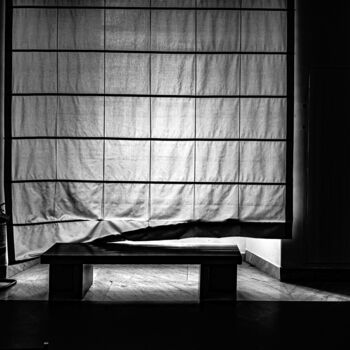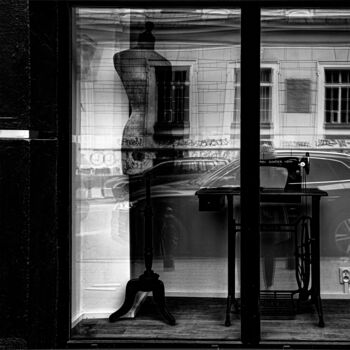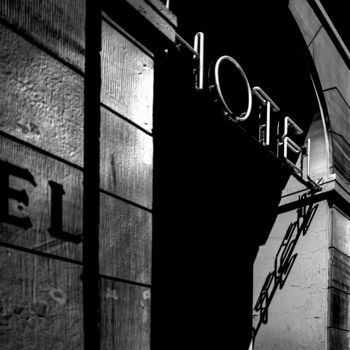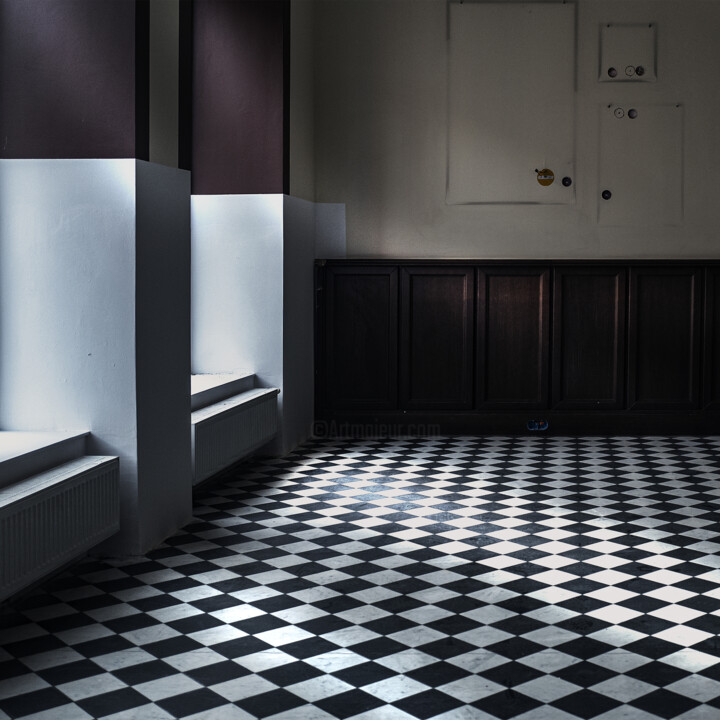

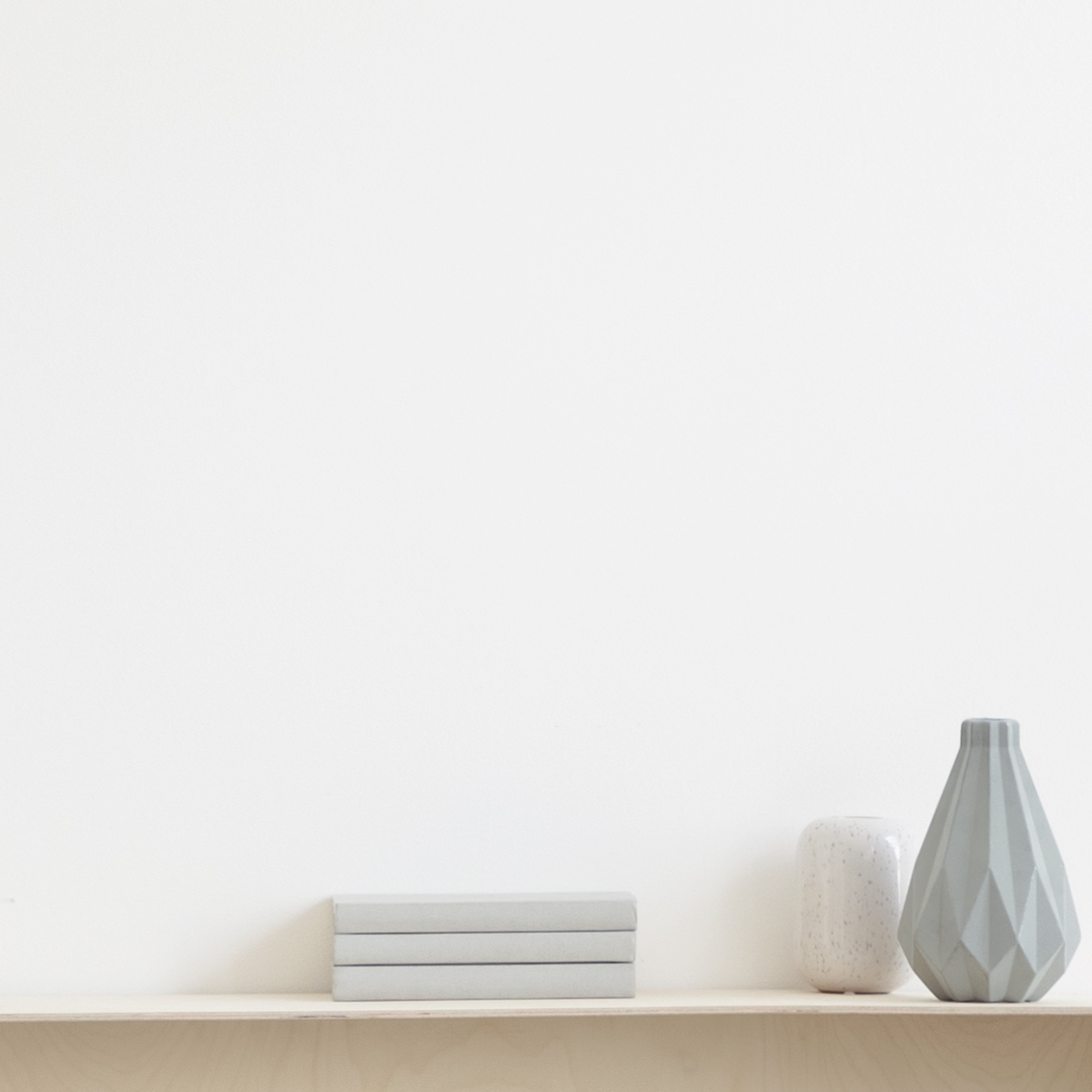
¡Háganos saber si le gustaría ver más fotos de esta obra de arte!
- Detrás del trabajo / lado del trabajo
- Detalles / Firma / Superficie o textura de la obra de arte
- Obra de arte en situación, Otro...
Empty Room # 24. After Vermeer (2021) Fotografía por Marta Lesniakowska
Más información
- embalaje (Embalaje de caja o cartón) Todas las obras se envían cuidadosamente protegidas y aseguradas, con un transportista premium.
- Seguimiento Seguimiento del pedido hasta la entrega al comprador. Se proporcionará un número de seguimiento para que pueda seguir el paquete en tiempo real.
- Plazos de tiempo Entrega mundial de 3 a 7 días (Estimar)
- Impuesto de aduana no incluido El precio no incluye gastos de aduana. La mayoría de los países no tienen impuestos de importación para obras de arte originales, pero es posible que deba pagar el IVA reducido. La oficina de aduanas calculará las tasas de aduana (si las hubiere) a la llegada y el transportista las facturará por separado.
Más información
- Certificado de autenticidad online rastreable Los certificados de autenticidad se pueden verificar en línea en cualquier momento escaneando el código de la obra de arte.
- Certificación de la cotización de artista. Los expertos estudian el conjuto de la obra de un artista y su carrera y luego establecen una cotización media independiente y fiable. La cotización media permite situar al artista en una gama de precios durante un período determinado. También se puede solicitar a los expertos que fijen una cotizacion para una obra en particular.
Más información
Pago seguro 100% con certificado SSL + 3D Secure.
Más información
-
Obra de arte original (One Of A Kind)
Fotografía,
Fotografía digital
/
Fotografía no manipulada
en Papel
- Dimensiones Altura 15,8in, Anchura 15,8in
- Estado de la obra de arte La obra de arte está en perfectas condiciones
- Enmarcado Esta obra de arte no está enmarcada.
- Categorías Fotografías menos de 5.000 US$ Minimalismo Arquitectura
W ten sposób moja fotografia staje się wydarzeniem ontologicznym, które daje się „czytać“ w swej warstwie czysto estetycznej. Formalny język, jakiego tu użyłam, ma swoje znaczenie. Pole obrazowe jest tu dyscyplinowane zasadami poetów-minimalistów: ekonomia szczegółów, odkrywanie ukrytych podtekstów i aluzji w niezauważalnych przedmiotach i fragmentach codziennej rzeczywistości, powierzchowności i przyziemności rzeczy. Ostrość, bezpośredniość, prostota ujęcia, precyzja kompozycji – wszystko to pokazuje, że fotografia nie jest kontyngentna/przypadkowa, ale, tak jak malarstwo, jest zdolna wytwarzać mocne obrazy realizujące porządek kompozycyjny jako zasadę zwartej i zdyscyplinowanej budowy obrazu (ml).
Fotografia wyróżniona i eksponowana w Centrum Sztuki Współczesnej „Znaki czasu” w Toruniu 2021 roku.
A work from the "Empty Rooms" series that has been in progress for several years. This empty interior is one of the varieties of still life. An old iconographic strategy that never compromises itself is activated here. The empty room evoked in my "remembering gaze" paintings by Johann Vermeer, with its distinctive light on the floor with a black and white checkerboard motif. Vermeer, like many artists of his era, built his paintings using such geometric elements to create the illusion of three-dimensional space on the flat surface of the painting. I dedicate this photograph to Vermeer, the first artist of the modern era to use a camera obscura to achieve this effect. In a sense, my photograph penetrates the secrets of his workshop: it shows the "Vermeerian" interior as a mise en scene, a set that awaits the characters in his paintings - a girl reading a letter, weighing pearls, pouring milk. He invokes the notion of quotation as the guiding principle of re-presentation, which refers to other images, iconographic borrowings from the Western painting tradition, which are "invented" in real space and then secondarily aestheticized.
In this way my photography becomes an ontological event that can be "read" in its purely aesthetic layer. The formal language I have used here has its meaning. The pictorial field here is disciplined by the principles of the poet-minimalists: economy of detail, discovering hidden subtexts and allusions in unnoticed objects and fragments of everyday reality, the superficiality and mundanity of things. Sharpness, directness, simplicity of approach, precision of composition - all this shows that photography is not contingent/accidental but, like painting, is capable of producing strong images that realize the compositional order as the principle of a compact and disciplined image construction (ml).
The photo was awarded and exhibited at the Center for Contemporary Art "Znaki Czasu" (“Signs of the times”) in Toruń 2021.
Collector's photography, color, , digital on archival paper Hahnemuhle Photo Rag Baryta 315g (semi-flash), archival paper, acid-free, signed on the face and on the reverse, dated 2021, Size 40x40 cm, not glued, without frame. Certificate of Authenticity., Without damages. Archived file: L1120024.DNG
Marta Lesniakowska es fotógrafa artista pero también, al mismo tiempo, historiadora y crítica de arte, investiga sobre cultura visual. Eso es lo que determina su acercamiento a la fotografía: una estrategia de la “mirada que recuerda”, que recuerda imágenes familiares de la historia del arte para transmitirlas/intertextualizarlas. Su diálogo con ellos consiste en preguntarse si es posible evocar sus significados y lo que son o pueden ser hoy. Está fascinada por la luz: su papel en la construcción de la imagen, el parergon que crea la imagen. Por eso, en la fotografía de calle, analiza el juego de luces y sombras, la relación entre nitidez y desenfoque y la interpenetración de las imágenes como realidades simultáneas. De esta forma, resalta el carácter misterioso de la ciudad, haciendo referencia a la estética del cine negro y al maestro de la fotografía callejera del siglo XX, Saul Leiter.(ml)
Cuando toma fotografías, nada es más o menos importante para ella; su mirada se rige a menudo por los principios de los poetas minimalistas: la economía de detalles, el descubrimiento de subtextos e insinuaciones ocultas en objetos invisibles y fragmentos de la realidad cotidiana.
Marta Lesniakowska vive y trabaja en Polonia. Sus obras forman parte de colecciones públicas (Museo Nacional de Wroclaw, Museo de Bydgoszcz) y colecciones privadas (Países Bajos, Dinamarca, Alemania, Suecia, Suiza, Estados Unidos).
-
Nacionalidad:
POLONIA

- Fecha de nacimiento : fecha desconocida
- Dominios artísticos: Obras de artistas profesionales,
- Grupos: Artista Profesional Artistas Polacos Contemporáneos




